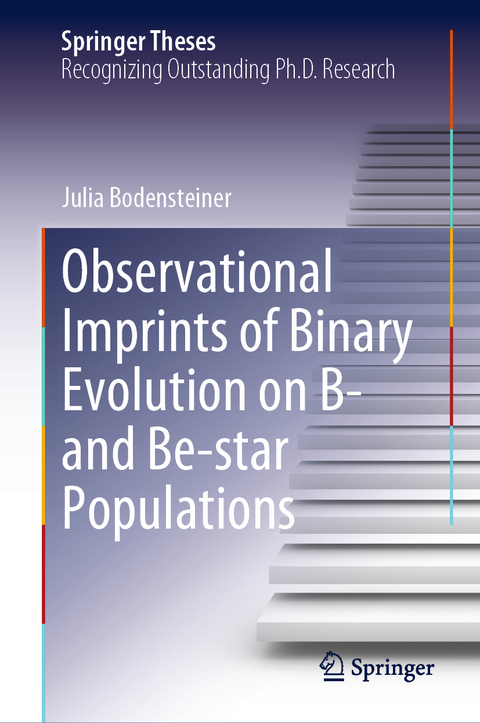
Observational Imprints of Binary Evolution on B- and Be-star Populations
Springer International Publishing (Verlag)
978-3-031-19488-7 (ISBN)
Finally,using the MUSE integral field spectrograph at the Very Large Telescope in Chile, the author presents a novel spectroscopic campaign focusing on the 40 Myr-old star cluster NGC 330 in the Small Magellanic Clouds. Combined with photometric observations from the Hubble Space Telescope, the MUSE data allow to characterize the entire massive star population of NGC 330, revealing their multiplicity properties and rotational velocities and providing unique observational constraints on their (binary) evolution history. This is made possible by the developments of novel numerical methods allowing to extract star spectra from the MUSE integral field spectroscopic data and to characterize their properties by the simultaneous comparison of MUSE spectroscopy and Hubble photometry with atmospheric models.
This book is a partly re-written version of the author's thesis offering a highly readable coherent text presenting not only new insights into the properties of binary interaction products but also giving students an excellent introduction into the field.
Julia Bodensteiner is a postdoctoral researcher at the European Southern Observatory (ESO) in Garching by Munich, Germany. She began her academic career at the Technical University of Munich (TUM), Germany, and studied at the Universidad Complutense de Madrid, Spain, for one year during her bachelor's degree. She then continued with a master degree at the TUM and successfully completed a collaborative Master's thesis between the Max Planck Institute for Extraterrestrial Physics and the European Southern Observatory, focusing on observational astrophysics. For her Ph.D. thesis, Julia worked with Prof. Hugues Sana at the Institute of Astronomy at KU Leuven, Belgium. Her main research interests lie in the observational characterization of massive stars, with emphasize on the impact of stellar multiplicity on the evolution of stars and an observational approach to test and refine evolution theories of massive single and multiple stars.
Introduction.- Spectroscopy of massive stars.- On the lack of main-sequence companions to massive Be stars.- Is HR 6819 a triple system containing a black hole? - An alternative explanation.- The young massive Small Magellanic Cloud Clusters NGC 330 seen by MUSE.- Summary and future work.- Appendices.
| Erscheinungsdatum | 02.12.2022 |
|---|---|
| Reihe/Serie | Springer Theses |
| Zusatzinfo | XX, 128 p. 44 illus., 42 illus. in color. |
| Verlagsort | Cham |
| Sprache | englisch |
| Maße | 155 x 235 mm |
| Gewicht | 379 g |
| Themenwelt | Naturwissenschaften ► Physik / Astronomie ► Astronomie / Astrophysik |
| Schlagworte | Binary Evolution • Binary Interaction Products • Binary stars • ESO Very Large Telescope • Massive Stars • observational astrophysics • Optical Spectroscopy • Star Clusters • Thesis Julia Bodensteiner |
| ISBN-10 | 3-031-19488-8 / 3031194888 |
| ISBN-13 | 978-3-031-19488-7 / 9783031194887 |
| Zustand | Neuware |
| Haben Sie eine Frage zum Produkt? |
aus dem Bereich


